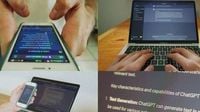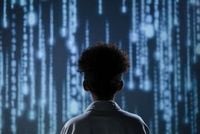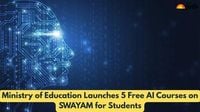Artificial intelligence (AI) is rapidly transforming education across the globe, bringing both excitement and careful consideration to classrooms from Liverpool to Hutchinson, Kansas, and all the way to Washtenaw County, Michigan. As schools and educators grapple with the best ways to introduce these powerful new tools, three very different communities are showing how AI can enhance learning, empower teachers, and prepare students for a future where technology and human skills must go hand in hand.
In Hutchinson, Kansas, the Mark Cuban Foundation, in partnership with the Cosmosphere International Science Education Center and Space Museum, is preparing to launch a free Artificial Intelligence Bootcamp for high school students this fall. The program, open to students in grades 9 through 12, will run on three consecutive Saturdays—November 1, 8, and 15, 2025—from 11 a.m. to 4 p.m. each day. What’s remarkable is that meals, transportation support, and technology are all provided at no cost, removing common barriers to participation.
This bootcamp is not just about theory. According to the Mark Cuban Foundation, students will get hands-on experience with AI tools, including generative AI, and will explore real-world applications across healthcare, business, computer science, the arts, sports science, and career readiness. The program’s structure includes a capstone project, with guidance from industry mentors, ensuring that students can put their new skills to practical use. Since 2019, the foundation’s AI Bootcamps have served thousands of students nationwide, aiming to bridge the digital divide that often leaves rural or underserved communities behind. The 2025 program introduces a new element: a Teacher Fellow in every location, designed to support local educators and help them carry lessons from the bootcamp back to their own classrooms. The application deadline is September 30, 2025, and more information can be found at markcubanai.org.
Meanwhile, in Liverpool, a city with a proud educational tradition, artificial intelligence is making waves at the primary school level. According to BBC Radio Merseyside, more than 4,000 primary school pupils involved in a pilot program using Century AI software have seen their grades improve over the last school year. The software, developed by Century Tech, automates time-consuming tasks like marking, lesson planning, and data gathering, freeing up teachers to focus on what many believe matters most: building strong relationships with their students.
Steve Rotheram, the city region’s mayor, told the BBC that the pilot was rolled out across more than 100 primary schools, serving over 28,000 students and employing more than 1,300 teachers. Century Tech’s AI models have been refined since 2013 using data gathered from schools and institutions across the UK, making the platform especially tailored to the needs of British classrooms. The result? Teachers report having more time to engage with students on a personal level, while students benefit from more individualized feedback and support.
“The software automates tasks such as marking, lesson planning, and data gathering, so teachers can focus on building human relationships with students,” Century Tech said in a statement. For many teachers, this shift is a welcome relief in a profession often stretched thin by administrative demands.
Across the Atlantic in Washtenaw County, Michigan, Ypsilanti High School is taking a proactive approach to AI in education, choosing to see it as a tool to enhance learning rather than a threat to traditional teaching. Dr. Chelsea Harris Hugan, principal of Ypsilanti High, is leading the charge to find the right balance between embracing AI’s strengths and fostering the uniquely human qualities that machines can’t replicate.
“AI is good at speed and efficiency and predictability, but there are some things that humans only can do,” Dr. Harris Hugan told Local 4. “Humans can only do curiosity. So we’ve got to teach students how to be curious. We’ve got to teach students how to have compassion and empathy, and courage and have resiliency. So that’s what we focus on in our classrooms.”
Students at Ypsilanti High are already putting AI to work in creative, constructive ways. Jamir Pratt, a senior, used AI to develop a business proposal for a track recovery program—an online platform offering personalized recovery plans for athletes. “It helped me put it together—everything I wanted to offer it helped me put it together in a way that was cohesive,” Pratt explained. His experience shows how AI can help students organize complex ideas and bring them to fruition.
Michael Martinez, another senior, highlighted the difference between using AI as a shortcut and as a genuine learning aid. “Of course you can’t use it to write a paper—that’s obvious—but using it as a tool like after hours, using it as a teacher, you can’t get. ChatGPT is a great resource,” he said. Martinez believes that when students use AI in partnership with their teachers, it becomes “a vital asset.”
The district’s superintendent echoed this sentiment, emphasizing that if schools are preparing students to enter the workforce, then utilizing all available tools—including AI—must be part of the curriculum. This pragmatic approach recognizes that AI is here to stay, and that students will need both technological fluency and strong human skills to thrive in tomorrow’s job market.
What unites these diverse efforts—from Kansas to Liverpool to Michigan—is a shared recognition that AI can be a force for good in education, provided it’s used thoughtfully. The Mark Cuban Foundation’s bootcamp aims to give students and teachers the skills they need to navigate a rapidly changing digital landscape. Liverpool’s primary schools are showing that AI can help raise achievement and free up teachers to do what they do best. And in Ypsilanti, educators and students are demonstrating that AI, far from replacing human learning, can be a powerful partner in fostering curiosity, creativity, and resilience.
Of course, challenges remain. Schools must ensure that access to AI tools is equitable, that teachers receive adequate support and training, and that students are taught not just how to use AI, but when to rely on their own judgment, empathy, and critical thinking. But as these stories show, when communities come together to embrace innovation while honoring the human heart of education, the future looks bright—and perhaps a little less daunting.



